Featuring one of the most representative temples in Tokyo, Sensoji Temple annually attracts over 30-40 million visitors. Seen as Tokyo’s cultural heart, Sensō-ji is also home to various events, and a great number of tourists will be drawn from Japan and abroad. Stepping into the Kaminarimon Gate and making your trip to Japan from Sensoji Temple!
With a history of more than 1,300 years, this oldest temple in Tokyo will bring you an immersive experience and exploration of traditional Japanese culture during your time in Tokyo. This article helps you deeply know about Tokyo Sensoji Temple, including iconic attractions, cultural rituals, and seasonal events.
Table of Contents
Sensoji Temple Facts
A Glimpse into History: Why Sensoji Temple Matters
Must-See Attractions at Sensoji Temple
Cultural Experiences You Can’t Miss
Essential Tips for Visiting Sensoji Temple
Nearby Attractions & Tours
FAQs about Sensoji Temple
Sensoji Temple Facts
Japanese name: 浅草寺/せんそうじ (Sensō ji)
Address: 2-3-1 Asakusa, Taito-ku, Tokyo
Opening hours:
April-September: 6:00 am-5:00 pm
October-March: 6:30 am-5:00 pmClosed: No holidays
Entrance ticket: Free of charge
Suggested visit duration: 1-2 hours
Best time to visit: Early mornings or evenings on weekdays
A Glimpse into History: Why Sensoji Temple Matters
The Legend of Kannon and Its Divine Origins
Dated back to 628, two brothers discovered a golden Kannon statue when fishing in the Sumida River. At first, neither of them did not figured out what it was and threw it back many times. But it still appeared in their net. They took it and found the headman of the village, Haji no Matsuchi, who recognized it as the statue of Kannon.
Then, three of them made a simple hut for enshrining it. After this, the chief made his house a temple for the statue; from then on, Asakusa Kannon Temple, as well as Tokyo’s first Buddhist sanctuary, was born, which also symbolized Tokyo’s spiritual origins.
Surviving Wars and Rebirth
Tokyo Sensoji Temple was rebuilt multiple times after fires and natural disasters. And the main hall had survived for 300 years, even after undergoing the Great Kanto Earthquake. However, it was completely destroyed during WWII.
Post-war reconstruction of Tokyo Sensoji Temple was regarded as a symbol of peace and Tokyo’s rebirth. From 1951 to 1958, the main hall underwent restoration and completion. Kaminarimon Gate (Thunder Gate) was destroyed by fire during the Edo era. 95 years later, it was fully reconstructed in 1960.
A Living Cultural Hub
Tokyo Sensoji Temple has been beautifully restored and draws 30–40 million annual visitors. It becomes the most-visited temple in Japan, with a fusion of sacred rituals and festivals. Differing from days of yore, Sensoji Shrine is filled with bustling market energy now.
Sensoji Temple in Pop Culture
Boasting the oldest temple in Tokyo, Asakusa Sensoji Temple is viewed as the symbol of Tokyo, and often appears in anime to films, such as Rurouni Kenshin and Your Name. This hot spot captivates a lot of filmmakers and photographers to capture its incredibility.
Must-See Attractions at Sensoji Temple
Kaminarimon Gate – Tokyo’s Most Photogenic Landmark
As you enter the Kaminarimon, also known as Thunder Gate, the iconic 670kg red lantern with "雷門" calligraphy will come into view, which is the landmark of Asakusa. The Kaminarimon Gate leads the way to Asakusa’s historic district, and enshrines two gods of Fujin (Wind God) and Raijin (Thunder God), preventing the temple from natural disaster.
Nakamise Street – A Feast for the Senses
After stepping across Kaminarimon, visitors will enter Nakamise Shopping Street (Nakamise-dori Street), a 250-meter shopping street lined with a series of souvenir shops. Taking a stroll on this street can be one of the most enjoyable things to do in Asakusa, where people can buy some traditional snacks (e.g., ningyo-yaki, matcha treats), toys, souvenirs, yukata, etc.
Hozomon Gate & Five-Story Pagoda
At the northern end of Nakamise-dori Street stands the Hozomon, which was destroyed by fire many times. Later, it was built with fireproof materials, used for storing treasures.
The Five-Story Pagoda has a height of 53.32m, which is equivalent to an 18-story building, and is one of the most famous in Japan. The pagoda was destroyed during the Edo period, and its reconstruction was in 1973. Buddhist relics were donated as a gift and stored in the topmost. Tourists can enjoy panoramic views from the top.
The Main Hall (Kannondo)
The main hall was destroyed before, and it was restored in 1958. As a big part of the Sensoji Temple, the main hall houses the hidden Kannon statue. However, the statue belongs to a secret Buddha, hidden from visitors to see and pray. Its substitute statue will be on display on December 13th at 2:00 pm every year. Prayers have chance to see that one. Moreover, there are intricate ceiling paintings for visitors’ appreciation.
Asakusa Shrine – A Hidden Gem Adjacent to the Temple
Right next to the main part of the temple lies Asakusa Jinja Shrine. It is a Shinto Shrine and also known as Sanja-sama, where you can gain a quieter cultural experience. As one of the most famous Shinto shrines in Tokyo, it mainly commemorates the three founders of Sensō-ji, who made a great contribution to Sensoji.
Cultural Experiences You Can’t Miss
Omikuji Fortune-Telling Ritual
Omikuji Fortune belongs to a kind of paper fortune, and people usually use it to predict their future fortune. Participate in the traditional method of drawing fortunes, and try your luck.
No need to worry about drawing the bad one. If that happens, you can just tie bad fortunes to trees to ward off misfortune, turning bad luck into good luck.
Purification Rituals
Clean hands and mouth before entering sacred spaces is the etiquette in most temples. Even in the smallest shrines, Temizu-ya or chōzu-ya (手水舎) are set for prayers’ convenience, where people can use a ladle to water their hands and rinse their mouth, standing for purifying the body and mind.
Here are the steps for purification for your reference:
1. Use the ladle in your right hand to wash your left hand.
2. Switch the ladle to the left and wash the right hand.
3. Grasp the ladle with your right hand to scoop up water into your left hand. And drink water to rinse your mouth for a couple of seconds. Finally, spit it up on the ground.
Seasonal Festivals: When Sensoji Comes Alive
Sanja Matsuri, renowned as the Three Shrine Festival, happens in May every year, which honors the three men who contributed to the Senso-ji Buddhist temple. Not only is the event considered one of the Shinto festivals in Tokyo, but it is also Tokyo’s largest festival, with parades and taiko drumming.
When the end of the year nears, the Senso-ji festival brings the year-end fair, Hagoita-Ichi Market, held from December 17th to 19th. This year-end fair was one of the biggest events and the oldest market during the Edo period. About 50 booths will be set up next to the main hall of the temple. At that time, assorted of handicrafts, especially the decorative bats, are on display across the streets.
In July of every year, the largest event in Tokyo, Hozuki Market, will be held, where 100 stands sit around the temple. This lantern market sells various kinds of lantern plants, wind bells, and fruits.
Another annual event, called Hagoita-ichi, usually comes in December. In the antique wooden paddle fair, many stalls sell hagoita, wooden paddles for decoration, which are usually used in the New Year game.
Kimono Experience
Many stores around the Sensō-ji offer kimono rental, where staff can help customers dress up. If interested, do not forget to make an appointment for the kimono.
Wearing the kimono and wandering through Sensoji Temple can bring you a memorable experience, while you dive into Japanese traditional culture. It feels like drilling back to the Edo era.
Essential Tips for Visiting Sensoji Temple
Opening Hours and Ticketing
Temple grounds are 24/7 accessible for visitors. Sensō-ji hours of the Main Hall are from 6:00 am to 5:00 pm, during the period of April to September; and 6:30 am-5:00 pm from October to March. There are no closing days and it is free of Sensoji Temple entrance fee, therefore, you do not need to worry about Sensoji Temple tickets.
Best Time to Visit & Photography Spots
The best time to visit Sensō-ji Temple is in early mornings (6:00–7:00 AM) on weekdays to avoid crowds. Sensoji Temple at night is less crowded as well. Avoiding a couple of days after New Year's (January 1st) and Golden Week (late April to early May) helps you skip most crowds.
Aside from Kaminarimon Gate and Nakamise-Dori Street inside the temple, there are some events and scenes that offer great shooting spots for tourists.
Evening illuminations in the temple create a magical ambiance, especially at post-sunset. Sensō-ji Temple sunrise offers a highlight of water and casts sunshine over the temple, offering a peaceful picture.
How to Get to Sensoji Temple
From Tokyo Station: 20-minute ride on the JR Yamanote Line, then walk to the temple
From Asakusa Station (Ginza/Tobu/Toei lines/Tsukuba Express): 5-minute walk to the temple
From Shibuya: 33-minute ride on the Ginza Line, then walk 6 minutes to the Sensō-ji temple
Etiquette Tips
1. Hands folded to pray and take a Bow before entering the gates.
2. Photograph permitted except in the main hall’s inner sanctum.
3. No need to clap or use a bell in the temple.
4. Conduct purification rituals by using a ladle, like rinsing hands and mouth with water.
5. Toss a coin into the saisen box.
Nearby Attractions & Tours
Tokyo Skytree
A 10-minute walk from Sensō-ji Temple sits the tallest tower in Japan, Tokyo Skytree, with a height of 634 meters (2,080 ft). Boasting one of the must-see attractions in Tokyo, the tower offers panoramic views and Mt. Fuji on clear days from the observation decks. Besides, tourists can enjoy shopping and savor gourmet food in the commercial complex as well as have a great time in the recreational facilities.
Sumida River Cruise
As twilight nears, take a cruise on the Sumida River for stunning skyline views, or reach the tour destination near the water can be one of the best things to do in Tokyo and a highlight in your Tokyo tour. There are various sorts of cruises that can be your alternatives. Do not forget to book tickets for the dinner cruise in advance.
Asakusa Sumo Club
Not far away from Tokyo Sensō-ji Temple and a 2-minute walk away from Asakusa Station is the Asakusa Sumo Club. The club combines restaurants and sumo, providing people a chance to visit a sumo stable while enjoying authentic Japanese food. They can give a shot with a sumo wrestler in person after wearing a sumo costume, which must be a rare experience for participants.
Kappabashi Dougu Street
Around 160 shops are standing in this Kappabashi Kitchenware Town, where you can take a stroll and shop a variety of novel gadgets, cookers, and elaborate, realistic food samples used in restaurants’ windows or adorning the store.
FAQs about Sensoji Temple
1. How early should I go to Sensoji?
Reach Sensoji Shrine at around 6:00 am or 7:00 am for a better experience.
2. Is Sensoji open 24 hours?
Temple grounds are open all year, but the main hall and shops in the Asakusa Sensoji Temple are accessible from 6:00 am to 5:00 pm.
3. Is Sensoji Temple wheelchair accessible?
Yes. The temple is very wheelchair friendly. Paved paths throughout the temple and elevators on the left of the main hall create a relatively convenient space for wheelchair users.
4. How long to spend at Sensoji?
1-3 hours are recommended. Specific tour duration depends on how you explore the temple. Remember to give yourself one more hour for Nakamise shopping or meals.
Plan Your Tokyo Trip with Hi Five Trip
Asakusa Sensoji Temple must be an ideal destination, blending history, street food, and kimono experiences, which will create unforgettable Tokyo tours for you. If interested, feel free to contact us! Here are some of our top-selling Japan tour packages for your reference:
You can also choose to tailor-make a trip to Japan based on your own conditions. Guided cultural walking tour from Hi Five Trip enables tourists to better explore the local cultural richness.

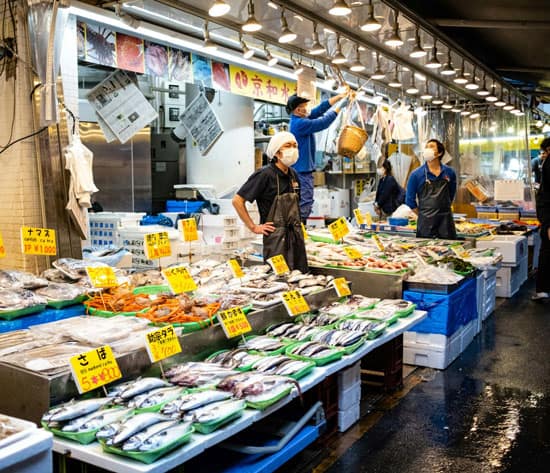
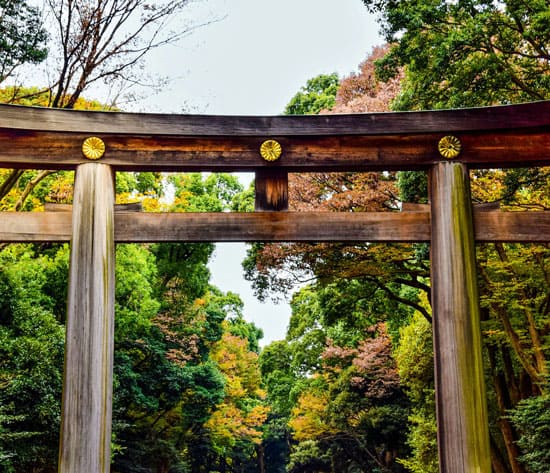


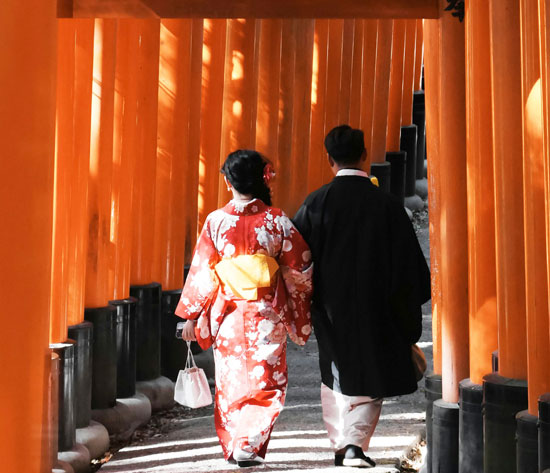
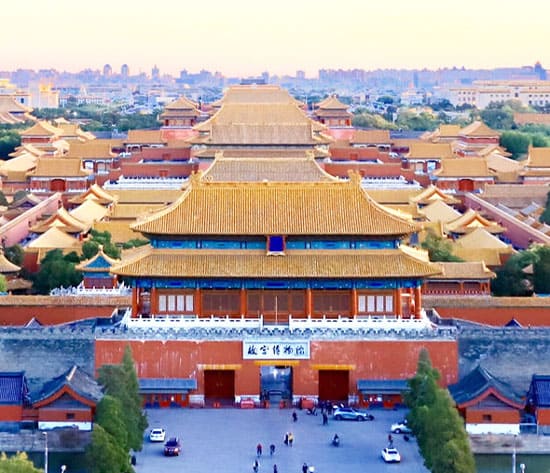
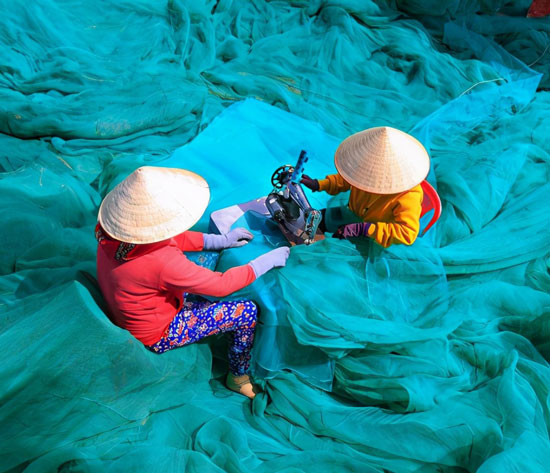
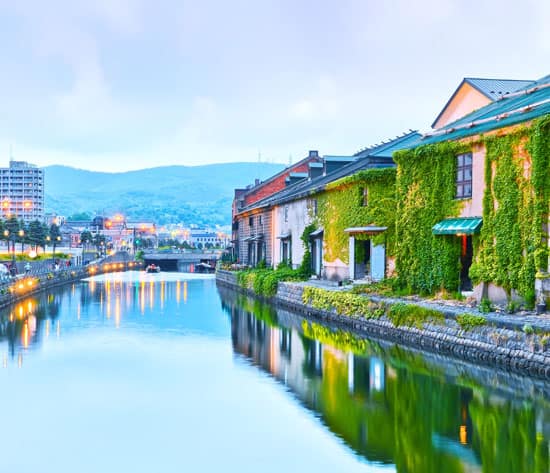
Have a Question?
You might see your comment appear on this page, but your email address and full name will not be published. Your personal information will remain confidential. Our Asia travel experts will get back to you as soon as possible. Required fields are marked *